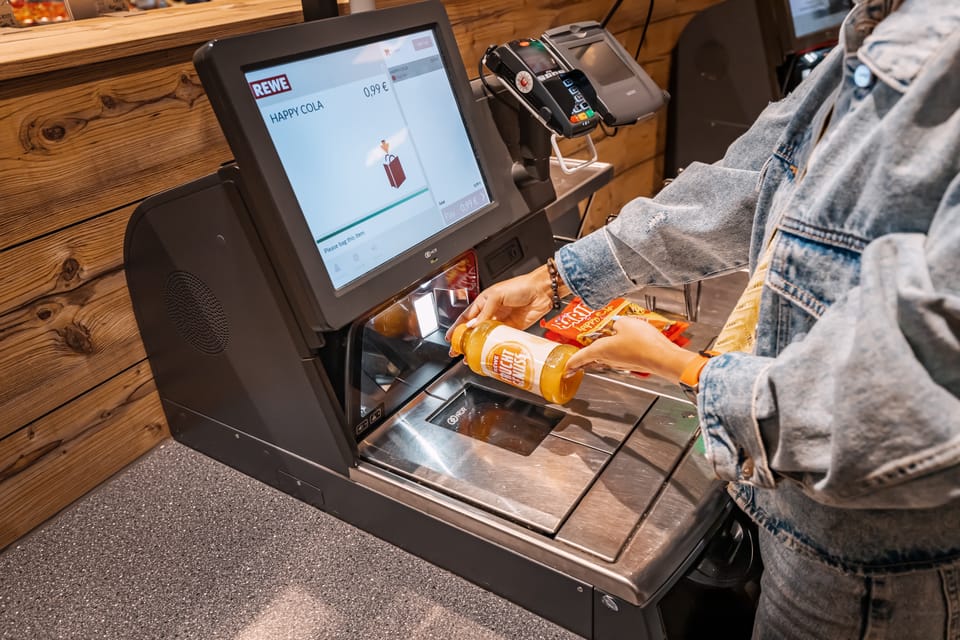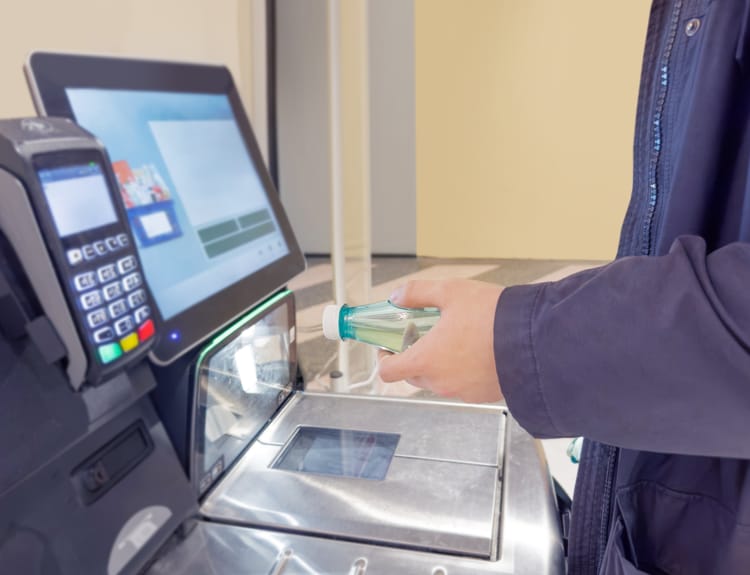Self-checkout kiosks: Convenience, challenges, and the role of Visual AI

Self-checkout kiosks have rapidly transformed the retail landscape, promising speed, convenience, and reduced labor costs. As of 2025, nearly 96% of grocery stores in the U.S. offer self-checkout kiosks, and about 40% of all grocery store registers are self-checkout stations (see link: Self Checkout Adoption & Theft Statistics (2025): Latest Data).
Globally, over 10,000 retailers have installed these systems, with projections suggesting more than 24,000 stores will offer self-checkout by 2030. The North American self-checkout systems market is valued at $2.28 billion as of 2024 and is projected to exceed $5 billion by 2030.
The adoption rate is staggering: 95.9% of consumers have used self-checkout machines, and 73% prefer them over traditional staffed registers. For younger shoppers, the preference is even stronger—80% of Gen Z and 70% of Millennials favor self-checkout, citing speed, privacy, and control over the process. Self-checkout now accounts for 30% of all in-store grocery transactions, and usage has soared 450% since 2019 (see 23 Revealing Self Checkout Statistics, Trends & Facts In 2025 - ExpertBeacon).
The dark side: shoplifting and shrinkage
Despite their popularity, self-checkout kiosks have introduced significant challenges, particularly in loss prevention. Shoplifting rates have surged since their introduction. Theft at the self-checkout is up to 65% higher compared to traditional cashier lanes, with shrinkage (the difference between recorded and actual inventory) at self-checkout reaching 3.75%—up to four times higher than staffed lanes.
Recent surveys reveal that 15% of self-checkout users admit to stealing, and 44% of those plan to do it again. Over 20 million Americans have stolen from a self-checkout kiosk, and 69% say it’s easier to steal from these machines than from a cashier. The average value of items stolen in a single trip is $60, and self-checkout theft accounts for approximately 34% of total retail shrinkage in the U.S.
The problem is exacerbated by reduced staffing. Fewer employees mean less oversight and assistance, making it easier for both intentional and accidental theft to occur. “Skip-scanning”—not scanning or mis-scanning items—is the most common method. Urban areas experience 15% higher theft incidents than rural ones, and stores with predominantly self-checkout stations see a 7% higher loss rate compared to those with staffed checkouts.
Retailers are responding by limiting self-checkout usage, adding item limits, and investing in AI cameras and staff oversight. Some chains, like Walmart and Dollar General, have even removed self-checkout lanes from select stores due to rising theft rates.
Legislative and industry response
States like Massachusetts are considering legislation to regulate self-checkout, requiring more staff and placing limits on kiosk usage. The National Retail Federation reported a 93% increase in shoplifting incidents and a 90% increase in dollar loss from shoplifting between 2019 and 2023. Cities like Long Beach, California, now mandate one staff member for every three self-checkout lanes and restrict certain purchases to staffed checkouts.
The promise of Visual AI: SAI Group’s solution
As retailers grapple with these challenges, visual AI solutions like those from SAI Group offer a promising way forward. Visual AI leverages computer vision and machine learning to monitor and guide the checkout process in real time.
How Visual AI can help:
- Instant non-payment detection: Utilizes AI to instantly identify when customers avoid payments.
- Subtle but powerful: Delivers real-time prompts to the SCO monitor, allowing customers to self-correct without direct staff involvement.
- Empowered store staff: Keeps the store staff informed by sending notifications on the store’s hand-held terminals.
- Seamless SCO integration: Compatible with a range of self-checkout systems for straightforward multi-vendor integration.
By empowering customers to resolve issues independently and providing intelligent oversight, visual AI can reduce friction, minimize theft, and enhance the overall shopping experience. Retailers can reallocate staff to more complex tasks, improving customer service and operational efficiency.
Self-checkout kiosks have become a fixture in modern retail, but their rapid adoption has brought new challenges—most notably, a worrying rise in shoplifting and inventory shrinkage. As legislation and industry practices evolve, the integration of visual AI solutions like those from SAI Group represents a crucial step toward a smoother, safer, and more customer-friendly shopping experience. By combining technology with thoughtful design, retailers can deliver on the original promise of self-checkout: true convenience without compromise.
About SAI
As a leader in computer vision technology, SAI Group delivers cutting-edge, multi-modal AI solutions into retail environments. Using a unique platform approach, its technology uses existing camera systems to target losses, increase store safety, and underpin operational efficiencies.
All solutions are built from the ground up to ensure the highest levels of security and data protection, respecting the privacy expectations of the public and operating to stringent ethical standards while delivering substantial value to our clients. Globally, SAI monitors millions of transactions per day, protecting the revenues from tens of millions of product sales and hundreds of millions of customer interactions. Its models also accurately identify anti-social behaviour, aggression and violence, helping to de-escalate situations with real-time interfaces to security officers and operations centres.



